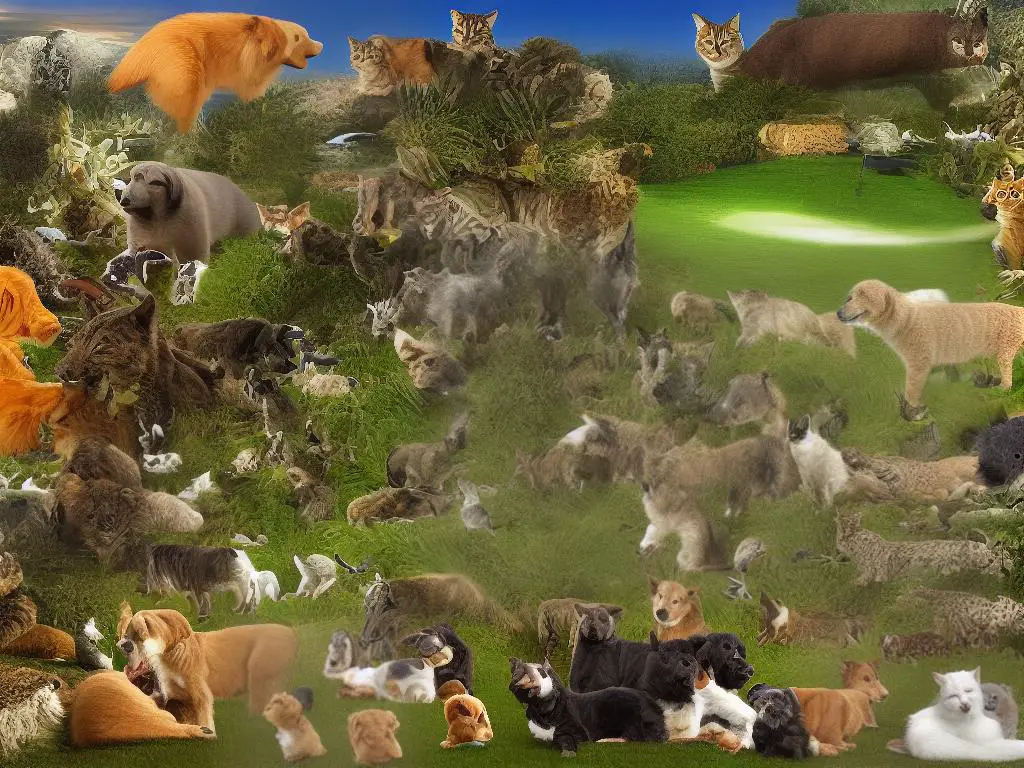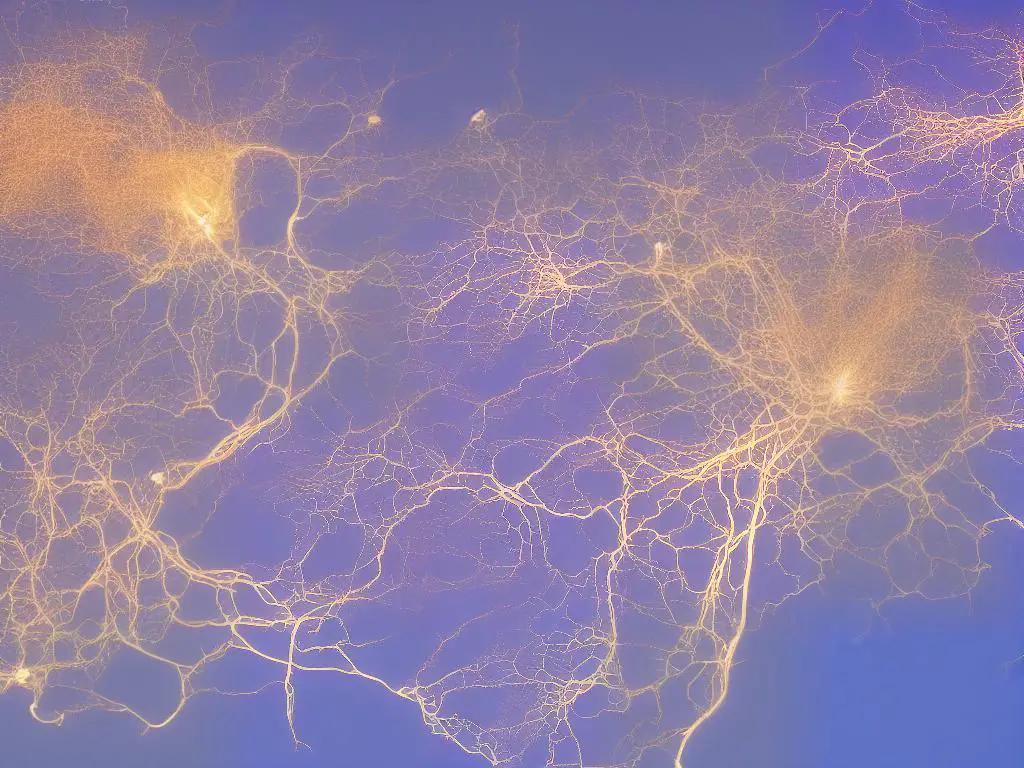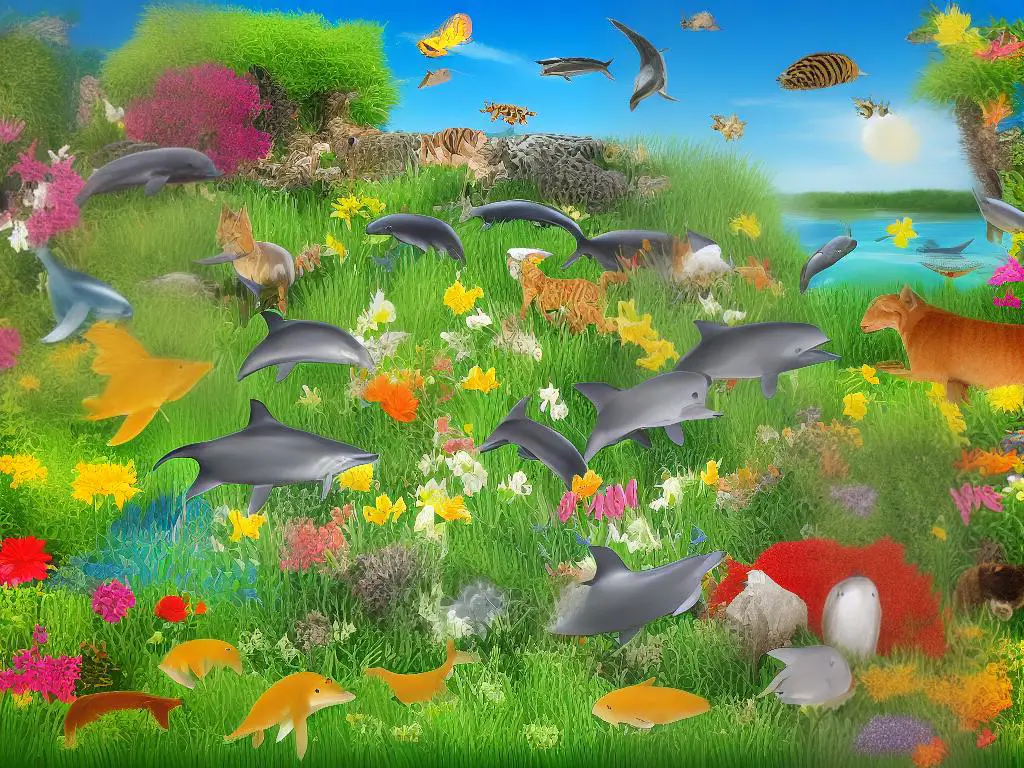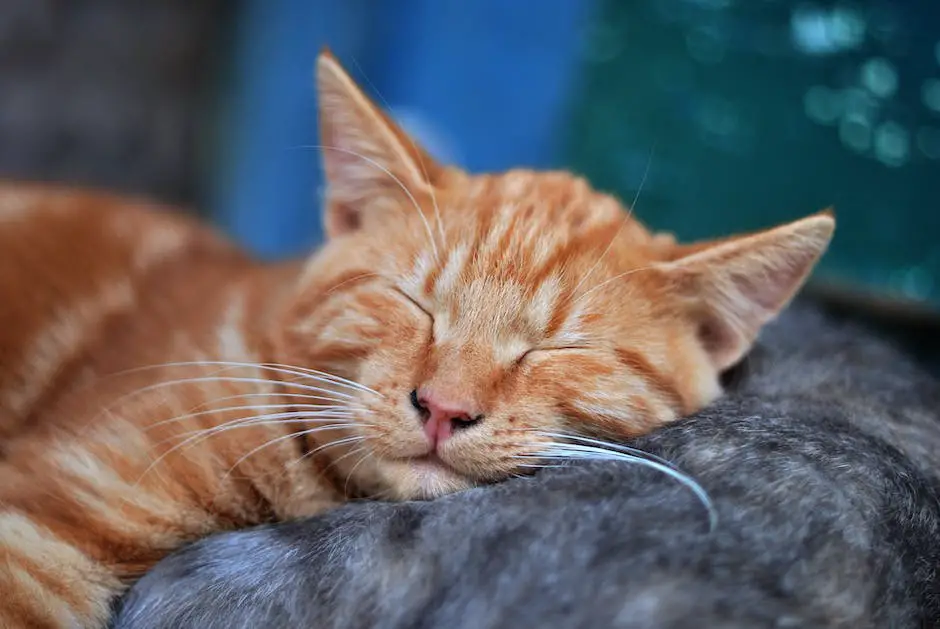Curiosity about the world around us often leads to a fascination with the wonders of the animal kingdom. While we know that animals exhibit various behaviors and thought processes, have you ever wondered whether they dream like humans do? Venturing into the realm of animal consciousness, science has uncovered intriguing patterns and neural processes behind animals’ slumber. From mammals to reptiles, dreams experienced by different species reveal a fascinating parallel with our own nighttime adventures.
Animal Consciousness & Dreams
One fascinating aspect of animal consciousness is the ability to dream, which has been observed and studied in various species. While not as well understood as human dreaming, research has begun to reveal some interesting similarities and differences between the dream patterns of animals and humans.
For instance, studies involving dogs have shown that they exhibit similar brain wave patterns during sleep as humans doing the same thing. Meanwhile, evidence suggests that cats dream too, and often about their hunting instincts as they re-enact their predatory behaviors during sleep.
In a remarkable study conducted on rodents, researchers at the Massachusetts Institute of Technology monitored the brain activity of rats as they navigated a maze. They discovered that when the rats slept, their brain activity mirrored the same patterns observed while they were awake and navigating the maze. This finding suggests that rats not only dream but, much like humans, use their dreams to replay and consolidate their experiences, thus reinforcing memory.
Birds too have been found to exhibit dream patterns in their sleep. Zebra finches, for example, are known to practice their songs during sleep, with their brain activity mimicking the same patterns that occur while they sing during their waking hours. This suggests that these songbirds utilize sleep and dreaming for learning and solidifying their singing skills. Similarly, studies on the sleep patterns of reptiles, such as the bearded dragon, have revealed the presence of REM (Rapid Eye Movement) and Non-REM sleep stages, suggesting the possibility of dream experiences in these creatures.
Marine mammals, such as whales and dolphins, present a unique case for animal dreaming. Since they must rise to the surface for air periodically, these mammals sleep by keeping only one half of their brain awake at a time. This is called unihemispheric sleep, and while it enables them to continue breathing and remain alert to potential threats, it raises questions about their capacity to experience dreams the way other animals and humans do.
Exploring the nature of dreaming and consciousness in animals is an intriguing subject that continues to captivate researchers worldwide. Our current understanding of various species’ potential dream experiences offers a glimpse into this fascinating realm, yet there is still much to be discovered. Central to these studies is the question of what purpose, if any, these dreams might serve in the lives of animals and how they relate to our understanding of the diverse array of consciousness found across the animal kingdom.

Neuroscience of Animal Dreams
When researching animal dreams, scientists have observed both similarities and differences in the brain structures and processes involved in dreaming compared to humans. In both cases, the key brain regions involved in dreaming include the thalamus, hippocampus, and amygdala. These structures play essential roles in dreaming by regulating emotions, consolidating memories, and transmitting sensory information. Although the exact function and purpose of dreaming in animals remain subjects of ongoing research, it is believed that, much like humans, animals may dream as a means of processing and storing daily experiences.
One aspect of studying animal dreams is understanding the various stages of sleep that animals experience and how these stages compare to human sleep. Most animals, like humans, undergo two primary sleep stages: rapid eye movement (REM) sleep and non-rapid eye movement (NREM) sleep. During NREM sleep, the body is in a state of rest and regeneration, while the mind is less active. In contrast, REM sleep is characterized by heightened brain activity, similar to what is observed during wakefulness. This stage of sleep is typically when dreaming occurs in both humans and animals, as the brain processes information and consolidates memories from the day’s events.
The analysis of animal dreams also includes the examination of sleep patterns and the frequency of REM and NREM sleep in various animal species. While the duration, and alternation of REM and NREM sleep vary significantly across different species, some patterns have been observed. For instance, predators often have longer REM sleep durations than prey animals, possibly to consolidate their learning of hunting strategies and navigation skills. Moreover, animals with a higher degree of encephalization, such as primates and dolphins, tend to have more complex and vivid dreaming experiences due to their advanced cognitive abilities.
Research on animal dreams has also uncovered surprising findings that showcase the versatility of sleep in the animal kingdom. Studies have found that some birds and aquatic mammals show the ability to engage in unihemispheric sleep, a unique pattern where one hemisphere of the brain remains awake while the other is in REM sleep. This adaptation allows these animals to continue monitoring their environment for potential threats or navigate while still getting the benefits of sleep and dreaming.
The neuroscience of animal dreams is a captivating field of study that offers valuable insights into the shared neurobiological processes behind sleep and dreaming across various species. Investigating this area helps us comprehend the role of dreams in animal behavior and cognitive functions, shedding light on the evolutionary history of dreaming in all living organisms, including humans. By delving into the dreaming experiences of animals, we pave the way to a better understanding of consciousness and the mind’s exceptional abilities during sleep.

Function and Purpose of Animal Dreams
A vital function of dreaming shared among animals and humans is memory consolidation. Animals, like humans, undergo various activities and sensations throughout the day, and dreaming enables their brains to sift through these experiences, categorize, and store memories. As a result, animals learn and adapt to their surroundings. Notably, researchers have detected significant hippocampal activation during animal dreams, a region of the brain closely associated with memory consolidation. For instance, studies on rats navigating mazes during daytime observed that these animals tend to retrace their maze routes in their dreams, indicating that this process assists in solidifying their experiences into long-term memories.
Another important function of animal dreams is problem-solving. Dreaming may allow an animal to simulate different scenarios and potential outcomes related to their daily challenges or survival needs. For instance, dreaming about various ways to escape predators, or how to efficiently forage food, may enhance an animal’s cognitive flexibility and decision-making in the waking state. This could give the animal an adaptive edge, helping it survive and thrive in its unique ecological niche. In a sense, dreaming might grant animals a “safe space” to test and refine their strategies without the physical risks involved in real-life situations.Emotional processing and regulation could also be significant purposes of animal dreams in some species. Animals, like humans, experience various emotions, including fear, anger, happiness, and even grief. Dreaming might allow animals to modulate these emotions, thereby promoting psychological well-being. Similar to humans, animals also experience REM sleep, during which time they exhibit increased brain activity and more vivid dreams. This dream state might enable them to process emotionally charged experiences and recover from traumatic events. In this way, dreaming could facilitate an animal’s emotional resilience in the face of adversity.In addition to serving internal cognitive and emotional functions, animal dreams might also play an essential role in social bonding and communication. Certain social animals, such as primates, dolphins, and elephants, may use dreams as a way to rehearse and strengthen their bonds with other members of their social group. This could foster a more cohesive and cooperative social structure, benefiting the survival and reproductive success of the entire group. Future research might shed light on the intricate connections between an animal’s social life and its dream content, offering valuable insights into the evolutionary significance of dreaming.Finally, predator avoidance strategies might play an essential role in animal dreams. By simulating encounters with predators and practicing escape routes during their dreams, animals can potentially be better prepared to face real-life threats. This could be especially crucial for prey species, where a successful evasion from a dangerous encounter could mean the difference between life and death. By allowing animals to rehearse these critical survival skills during their dreams, they may be more equipped to respond swiftly and effectively in waking situations, increasing their chances of survival and overall fitness in their environment.

Types of Dreams in Different Animals
Various mammals experience a wide range of dreams varying in content and complexity. For instance, dogs are believed to dream about their day-to-day activities, such as playing and chasing, as well as emotionally-charged experiences like bonding with their owners. Some research even indicates that dogs can experience nightmares, exhibiting fearful responses during sleep. Similarly, cats are thought to dream about their daily lives, with hunting, playing, and grooming as common themes. In addition, marine mammals like dolphins are believed to enter into a state of unihemispheric sleep, wherein only one half of their brain sleeps at a time. This unique sleeping pattern affords them the ability to maintain basic functions such as swimming and surfacing for air, while potentially experiencing dreams simultaneously.
Birds, like mammals, also exhibit signs of dreaming. Research has shown that certain bird species, especially songbirds and parrots, engage in rapid eye movement (REM) sleep, which is associated with dreaming in humans. During this stage of sleep, birds experience bursts of brain activity that mimic the patterns observed when they are awake and singing. These findings suggest that birds are replaying their learned songs and possibly honing their vocal skills while they dream.
Reptiles and amphibians also appear to experience some form of dreaming. Anecdotal evidence and scientific research indicate that certain reptiles, such as lizards and snakes, can enter into REM sleep, where muscle paralysis and rapid eye movement can be observed. Although the exact content and purpose of dreams in these animals remain unclear, it is thought that they could involve replaying events from their waking lives, such as hunting prey or exploring their environment.
Even more fascinating are the dreams of octopuses, which are known to undergo dramatic color changes during their sleep. Researchers believe these color shifts may be indicative of dreaming, as they resemble the patterns displayed when an octopus is awake and reacting to its environment. This could imply that octopuses revisit their daily experiences, such as hunting for food or escaping predators, while they sleep.
Historically, humans have been fascinated by the concept of dreaming and the possibility of animals experiencing dreams as well. In various cultures, such as Australian Aboriginals, Native American tribes, and ancient Egyptians, animal dreams have played significant roles in mythology, folklore, and spiritual beliefs. These cultures held the belief that animals possess the power of dreaming and may reveal valuable lessons about life through this shared experience.

Human Interpretations of Animal Dreams
In recent times, scientists have begun to study dreams in animals, including insects and invertebrates. Research has suggested that honeybees may be capable of dreaming due to the neural activation patterns they exhibit, similar to those found during REM sleep in mammals. The possible themes of these dreams are yet to be determined, but they could involve navigation and foraging for food. As more studies are conducted, we continue to broaden our understanding of the complex and fascinating world of animal dreams, offering unique and intriguing insights into the lives and experiences of various species.
Another crucial aspect of human interpretations of animal dreams includes storytelling and fables. Many cultures use animals as central characters in their tales and impart essential moral lessons through these stories. For instance, Aesop’s Fables, a collection of tales dating back to ancient Greece, uses various animals as allegorical tools to teach children (and adults) moral lessons. These stories often involve animals having encounters or experiences that mimic human-like attributes, including dreams, thoughts, and emotions. Many Indigenous cultures have also passed down stories and legends featuring animals that held significant value in their communities, reflecting the understanding that animals are complex beings with their own emotional and mental lives.
In more recent history, the scientific study of animal dreams has gained momentum. Early research on this subject began with Pavlov, who first noticed the similarities of rapid eye movements and muscle twitches in sleeping dogs. Modern researchers have since studied various animals like rodents, monkeys, and even birds, to explore the occurrence and nature of dreaming in nonhuman species. Scientists have found that animals do indeed dream and that the main difference between human and animal dreams is the content. While humans dream about abstract concepts, animals dream about their day-to-day experiences, such as searching for food, playing, or interacting with other animals.
While the scientific study of animal dreams provides valuable insights into their mental and emotional lives, ethical debates have emerged about how these studies should be conducted. Some researchers argue that animal dreams should not be interrupted, as this might cause undue stress to the subjects. Others express concerns about invasive techniques such as monitoring brain activity during sleep that may involve implanting electrodes or exposing animals to unnatural conditions to study their dreams.
Overall, the human fascination with animal dreams has only grown over time, as people continue to explore these complex experiences through cultural myths, stories, and scientific research. As our understanding of animal dreams expands, we must also consider the ethical implications of such studies to ensure we treat these nonhuman dreamers with the respect and consideration they deserve. The interplay between human interpretations of animal dreams and the study of their neurological and behavioral implications highlights the complexity of the animal dreaming experience and its potential significance in the broader context of understanding the minds of all sentient beings.

Ultimately, the study of animal dreams provides a captivating glimpse into the complexity of the minds that inhabit our world. As we strive to gain a deeper understanding of these fascinating creatures, our interpretations of their dreams inspire curiosity and ethical reflection. As we uncover connections and similar patterns, we are reminded of the importance of our connection with nature and our responsibility to preserve the ecosystems that support the diverse array of dreams and lives.
